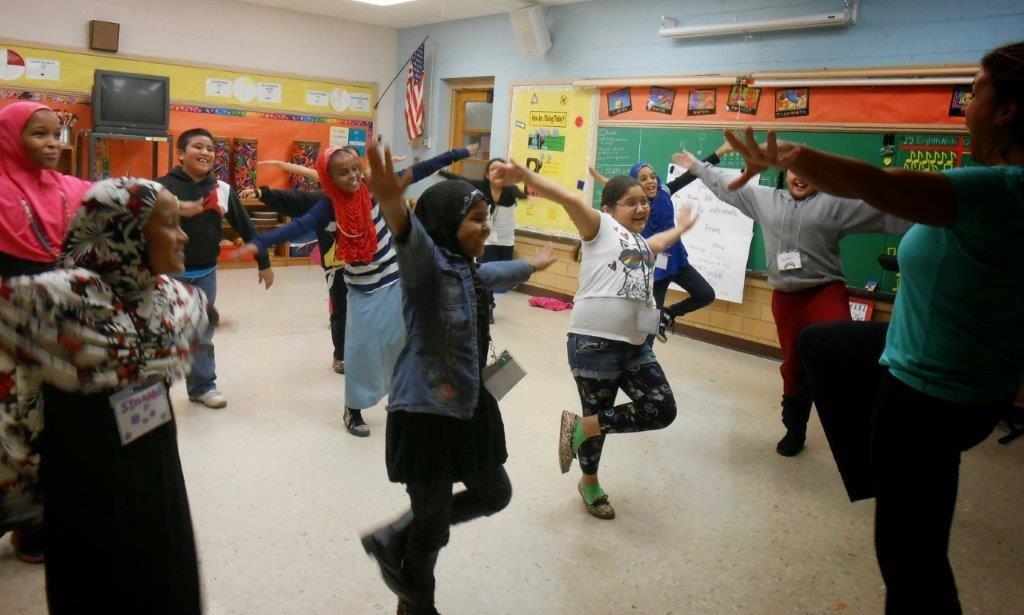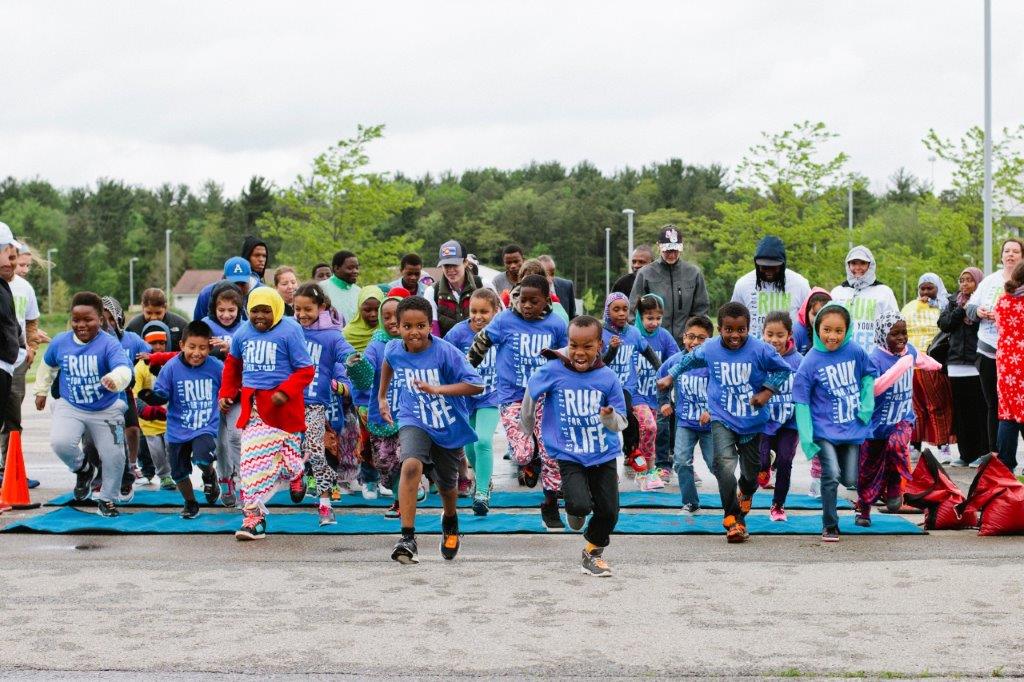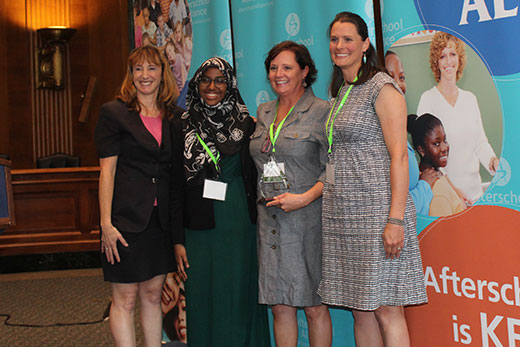 |
This year we were happy to announce the Columbus State Community College’s ESL Afterschool Communities (ESLAsC) as the winner of the Dollar General Afterschool Literacy Award. As the award winner, ESLAsC was featured in our new issue brief “Afterschool providing key literacy supports to English language learner students,” highlighted in a program profile, and received $10,000, which enabled them to provide summer programming to 120 youth this summer. In preparation for our issue brief, we caught up with Florence Plagenz, supervisor of ESLAsC, to hear a bit more about their programs.
Columbus, Ohio, is home to an estimated 45,000 Somalis and an estimated 44,000 Latinos. Responding to the high concentration of immigrant populations in the city, ESLAsC—which serves 100 percent English language learners, most of whom are from low-income families— provides necessary supports for these families. However, becoming such an integral resource took a lot of trust building and self-evaluation.
Building a strong foundation
ESLAsC began after adult participants in the Columbus State Community College’s Basic English classes voiced a need for similar opportunities for the youth in the community. With a Temporary Assistance for Needy Families (TANF) grant, the college was able to open seven sites located within low-income housing communities in Columbus. However, starting out fast wasn’t the best course of action for ESLAsC.
“In Columbus, there have been a lot of organizations that will go to low-income or immigrant communities and try to get them to sign up for afterschool programming but then not offer any programming. There was a lot of distrust initially,” explained Plagenz. “So we started off really big and had to whittle back down because there wasn’t a lot of structure, or oversight—a little bit of too big and too fast. […]There wasn’t a lot of community building or relationship building to get the trust of the communities.”
According to Plagenz, ESLAsC responded by adjusting their model. ESLAsC hired local community members and elders, as well as instituted greater oversight of their programs, which includes six months to a year’s worth of research on a community needs assessment.
“Our model today is that we work with the district and the apartment complexes where the families reside and do an in-depth evaluation on the need of the community,” Plagenz said. “We look at what barriers there are and evaluate things like, are there going to be transportation issues? Are there other afterschool options? What age group does the community want us to serve? We will meet with family members, local social organizations or cultural organizations, and include them in planning. Usually they are the ones that come to us and say they want the afterschool program, but we still go through that six month to a year process of evaluation.”
 |
Building a strong relationship
One thing that we valued in the ESLAsC program was their multi-tiered approach to support their students in and out of school. The program’s staff, including their site specialists and tutors, take time out of each week to be in the schools that their students attend.
“Our relationships with our kids are paramount, that is our most important thing,” Plagenz said. “But just as important is our relationship with the parents, our school staff, students’ teachers, our tutors, everyone. […] This bridge between afterschool and the classroom really helps our tutors know what our kids are learning during the day.”
Plagenz credits the strong relationship between the program’s providers and participants to ESLAsC staff’s level of investment and the program’s emphasis on hiring staff who are passionate about the work they do.
“I think [the students] feel cared about, and they feel like they are being held accountable. We work to be very consistent,” Plagenz explained. “We have high expectations and there is a feeling that they belong to something. We value their input, them, and their culture. In the end, it is their program.”
 |
Building a strong community
For ESLAsC, being a support for students means going above and beyond by involving the whole family. According to Plagenz, the program staff serve as a bridge between a child’s parents and his or her school.
“If there is an event at the school we make the phone calls to each family asking them to come, following up again, and then we make sure that we are at every school event,” Plagenz said. “There have even been instances where we pay for a bus and take parents to the school event—whether we are watching younger children, or we are working at the event, we are there. A lot of our staff also serve as interpreters for parent teacher conferences.”
In addition to supporting the children in the program, ESLAsC also provides a variety of services for the parents, including adult ESL classes and sewing classes, and helping wherever is needed in the community.
“We do home visits, we do social services referrals, and we partner with the local Columbus public health each year where parents and kids can come get vaccinated for the flu,” Plagenz said of their relationship with the program’s families. “If a parent is having trouble with an electric bill, we have helped make those appointments, we have taken parents and kids to doctor’s appointments and acted as translators. If a parent is reaching out to us for something, we are not going to say ‘no’ and drop the ball, and if we can’t do it we are going to make sure that they get to some place or someone that can.”
To learn more about Columbus State Community College’s ESLAsC, check out their program spotlight!

Comments are closed.